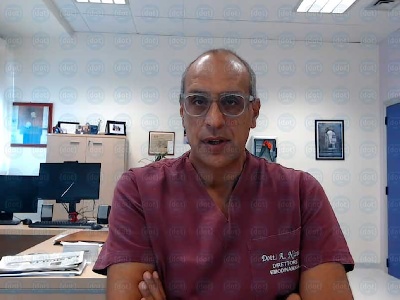Scicli - L’incontro fra l’inviato del Times e il vero commissario Montalbano è avvenuto al Convento della Croce, su un cortile di ghiaia, dove i tacchi hanno annunciato l’arrivo del detective.
Un’intera pagina. E’ quella che il Times di Londra ha dedicato ieri a Scicli e al suo commissario di Polizia, Maria Antonietta Malandrino, in realtà dirigente del commissariato di Modica, che ha competenza anche sulla cittadina barocca.
Nel reportage a firma di James Bone, ospite del Comune nell’ambito dell’educational finanziato dalla Regione, e dall’assessore Michela Stancheris, il racconto della città e del vero commissario che opera nei luoghi di Montalbano.
“Senza Scicli Montalbano non avrebbe lo stesso successo”, spiega l’inviato del Times, per oltre un ventennio corrispondente dagli Usa, e oggi inviato a Roma.
“Quando il regista e lo scenografo hanno iniziato a produrre la serie, si sono accorti che le scene in esterno guadagnavano telespettatori rispetto alle scene girate in interno”. Scicli chiave del successo della fiction, che ha riscosso grande seguito di pubblico anche oltre Manica.
The Italian detective on the Scicli beat is actually a stylish woman — and the last murder on her patch was two years ago, reveals James Bone
The rendezvous had been arranged, melodramatically, for an abandoned church on a sun-drenched hilltop in Sicily. Stretched out in the valley below lay the glorious baroque town of Scicli, where BBC Four’s Sicilian crime series Inspector Montalbano is shot. I had asked to meet the local police chief to discover the true-crime problems of a Sicilian detective. I heard footsteps crunching towards me across the white pebble courtyard. From behind me the police chief arrived wearing lemon-yellow high heels.
Contrary to the Godfather image of Sicily as the last bastion of male chauvinism, the real-life Inspector Montalbano — the police chief of Scicli and the surrounding area — is a stylish, confident woman in designer sunglasses and designer jeans.
Maria Antonietta Malandrino, 47, who is married with no children, has been in the post since 2007. Awkwardly, her last name is Sicilian slang for “naughty boy”, which can have both sexual and criminal connotations. As she tosses back her auburn hair and starts describing the local crime scene, it is hard not to think that she would make an even better TV character than Salvo Montalbano himself.
“Montalbano is a bit romanticised, but the stories it tells are certainly possible,” Superintendent Malandrino says. “I am really happy if I am cooking at home and I see Montalbano has arrested someone. I go to bed content.”
The TV series Inspector Montalbano, which recently began its third season in Britain, and the prequel The Young Montalbano, which has just ended its first season, are adaptations of the bestselling detective novels of the Sicilian author Andrea Camilleri.
Now 88, the prolific Camilleri, also known for his outspoken opposition to Silvio Berlusconi, the former Italian leader, has written 32 Montalbano stories since 1994. A screenwriter and former actor, he introduces episodes of Inspector Montalbano on Italian television himself, in the style of Alfred Hitchcock.
Camilleri was born in Porto Empedocle, the port of the ancient city of Agrigento on the south coast of Sicily, and missed his school exams because of the Allied invasion during the Second World War. He set the Montalbano series in the fictional city of Vigàta, which was meant to be his home town.
When Italy’s state-run RAI television adapted the stories for the small screen, the director Alberto Sironi persuaded Camilleri to transpose it to the heartachingly beautiful towns of Italy’s Costa Barocca, or “Baroque Coast”, listed on Unesco’s World Heritage register.
Montalbano’s beachfront villa, with its wraparound terrace, is actually a bed and breakfast in the seaside town of Punta Secca, where Montalbano takes his regular swim in the Mediterranean. The series’ Mafia chieftain Don Balduccio Sinagra lives in a castle in the countryside at Donnafugata. Vigàta’s main church is in real life the spectacular Cathedral of San Giorgio in Modica.
Montalbano’s police headquarters is, off-screen, the town hall of Scicli, where the series is shot every spring. It is fair to say that without the dramatic scenery, Inspector Montalbano would not enjoy the success it does. When they first started making the series, the producers noticed that episodes shot mainly in interiors lost millions of viewers compared to those filmed outside.
Just like her TV alter ego, Malandrino lives in a beachfront villa and takes regular swims in the Med, accompanied by her black labrador. She comes from one of Sicily’s most beautiful cities, Noto, which was completely rebuilt in the Baroque style seven miles from its original site after being devastated by an earthquake in 1693. Her father served as the commandant of one of Italy’s toughest jails: the Poggioreale prison in Naples, which is now named in honour of one of his successors, who was assassinated by the city’s Camorra crime syndicate.
“I originally wanted to be a lawyer,” she says. “Many of my childhood friends became police officers, but for a woman it was very rare. I was one of the first women at the police academy after a reform in 1981. Before then the only women in the police were called ‘inspectoresses’ and dealt only with cases involving women and children. There have only been women police dealing with killings, kidnappings, robberies and everything else since 1981.”
Malandrino, who still uses her maiden name, became a police officer at 22 and won promotion to police chief after taking a four-year course at a military academy in Rome. Being a woman has, on occasion, she says, helped her in investigations in the male-dominated underworld.
In one big case she was pursuing electoral fraud in which a mayoral candidate was claiming the votes of bedridden people in an old people’s home. While she was at the retirement home, one of the masterminds came in to deliver incriminating papers to the boss. Because she was a woman, he just assumed she was a nurse, not a cop.
On another occasion she was shopping off-duty without her pistol when an armed robber came into the store. Because she was a woman he ignored her as she left the shop to flag down an officer in a passing patrol car. He blockaded the entrance with his vehicle and arrested the culprit.
Malandrino now heads a police department that has responsibility for 100,000 citizens across a large swath of southeast Sicily. It is the fourth police department she has led in her native region, and the largest. “I am an only child and I have a mother who is 94 so it was a family necessity,” she says of her decision to stay in the area.
Montalbano works in a grand police station, but Malandrino is based in a concrete office building in the shabby part of Modica. She has 47 staff. “In the series Montalbano is the intelligent one and the other police are weird. We don’t have that relationship here,” she says.
Indeed, her deputy — the real-life equivalent of the womanising detective Mimi Augello — is also a woman, Rosa Cappello. “Mimi is a playboy,” she complains. “This is a small department. We are a family. There are no prima donnas and no playboys.”
Malandrino keeps a framed photograph of Montalbano on the wall behind her desk, but she has never met the actor Luca Zingaretti or his younger (and noticeably hairier) stand-in for the young Montalbano, Michele Riondino.
Ever since Mario Puzo’s bestseller The Godfather and the classic Marlon Brando film, Sicily has been synonymous in the popular imagination with the Mafia. Leoluca Orlando, the anti-Mafia Mayor of Palermo, the island’s capital and largest city, voices exasperation that the stigma remains.
“Brando was a great actor. The Godfather was a great film. But The Godfather was a disaster for Sicily,” he says. “The message of Montalbano is not negative. The part that is best about Montalbano is the defence of the law. But it’s the context in which it takes place that you remember. When you read Camilleri’s novels you don’t remember the defence of the law but the behaviour of the people.”
Because it has been moved out of the gritty port of Porto Empedocle, Inspector Montalbano gives a rather misleading impression of Malandrino’s beat.
Franco Causarano, the editor of the localGiornale di Scicli newspaper, says that the region has managed to fight off the encroachment of the Mafia from the nearby cities of Catania and Gela. “They have tried to enter this area but the police have been great at stopping them. There is a lot of intelligence work by the police,” he says. “We do not have big crime problems.”
Malandrino says there are myriad small criminal groups in her zone, some of which are linked to crime families elsewhere, but insists she has no particular Mafia problem. “The criminality here is not like in Montalbano, where there is a murder every day,” she says. “The statistics speak for themselves. The last murder was two or three years ago. The fact I can’t remember speaks for itself.”
The last murder in her area was committed by a mentally deranged man who killed his wife in Scicli two years ago. The last rape was by a Tunisian immigrant the year before that.
The economic crisis of recent years has provoked a rise in burglaries, however, particularly in the countryside. There is now one every three days. She is also responsible for policing a new law against “stalking” in an attempt to reduce the epidemic of “feminicide” in Italy.
Unlike Montalbano, however, Malandrino spends a lot of her time on administrative duties such as issuing passports. “Montalbano has to make people excited. If there was no major crime, no one would watch,” she says. Although she arrived at our rendezvous with a police escort, Malandrino does not need a bodyguard. She has a pistol but does not always carry it off-duty. “Yesterday, I went out to eat pizza at 1am and returned by myself,” she says.
The real-life detective appreciates Montalbano’s policing approach — even his readiness to meet with criminals. “The relationship with criminals becomes also human,” she explains. “It’s not excluded that in the course of an investigation you can speak with these people. Obviously, these human relations are conditioned by your duty.”
Like most modern Italian police she relies heavily on phone-tapping and other technical tools such as searching computer hard-drives in her investigations.
She clearly relishes the job. “Every now and then I wake up and say to my husband: ‘No more!’ But when I arrive in the office I love my work,” she says. “The Montalbano cases could have been, and maybe were, inspired by real cases. Although Camilleri is a novelist who uses fantasy, they were inspired by what he read in the newspapers.
“They are not distant from reality and Montalbano’s approach is not very different,” she says.
James Bone













